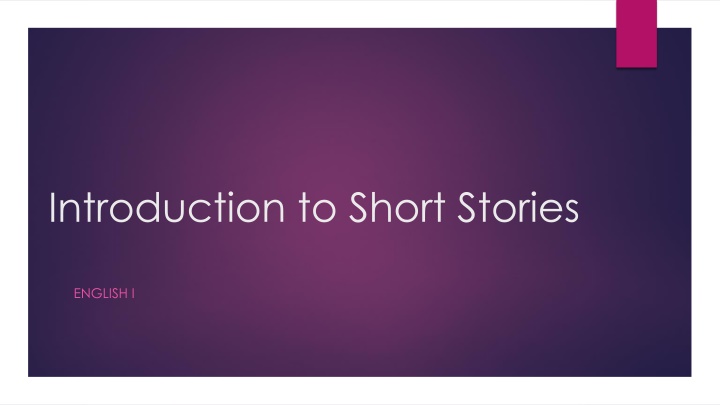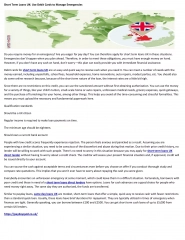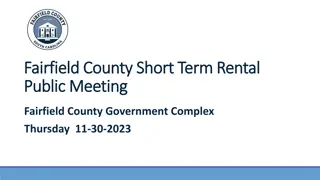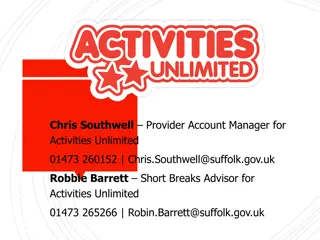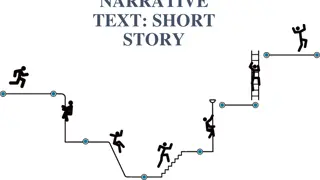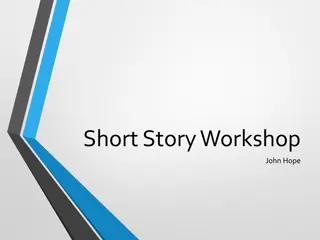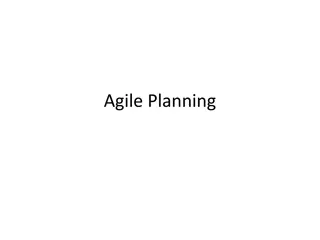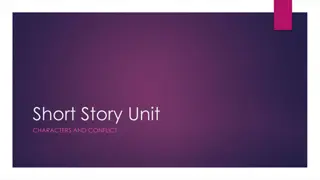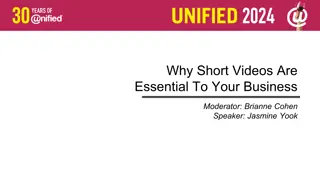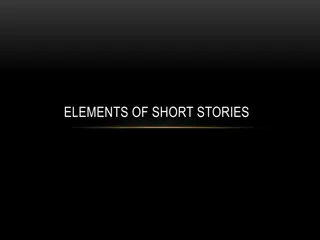Introduction to Short Stories
Dive into the fundamental elements of short story writing, from plot development to setting details and character portrayal. Explore the significance of plot order, setting contributions, and narrative points of view. Understand the roles of protagonists and antagonists. Enhance your storytelling skills by grasping the nuances of exposition, rising action, climax, falling action, and resolution. Learn how setting influences mood, tone, and theme in narratives.
Download Presentation

Please find below an Image/Link to download the presentation.
The content on the website is provided AS IS for your information and personal use only. It may not be sold, licensed, or shared on other websites without obtaining consent from the author.If you encounter any issues during the download, it is possible that the publisher has removed the file from their server.
You are allowed to download the files provided on this website for personal or commercial use, subject to the condition that they are used lawfully. All files are the property of their respective owners.
The content on the website is provided AS IS for your information and personal use only. It may not be sold, licensed, or shared on other websites without obtaining consent from the author.
E N D
Presentation Transcript
Introduction to Short Stories ENGLISH I
The Plotit thickens. (Or should we say, rises?) 4. Climax 3. Rising Action 5. Falling Action 1. Exposition 6. Resolution 2. Inciting Incident
Plot order of the action of the story Exposition introduction of characters and setting, mood should be set Inciting Incident problem or conflict has been revealed Rising Action events leading to the climax of the story Climax or Turning Point problem or conflict will be resolved Falling Action events leading to the resolution of the story Resolution- how it is all going to end
Setting when and where the story takes place WHEN the story is taking place This could be the year or century Or it could be the time of day/night WHERE the story is taking place What country, city, or state? Where specifically? A meadow, house, or outer space
Setting helps contribute to: Mood: the reader s attitude toward the story, characters, or events Tone: the author s or narrator s attitude toward the story, characters, or events Theme: the overall message the author is trying to convey through the story Sensory details: imagery that appeals to one (or more) of the five senses
Point of View the point from which the author narrates the story First Person I , the narrator is a character in the story Third Person he, she, they; the narrator is not involved in the story Limited the author does not reveal all of the information about a character or the characters Omniscient all-knowing (God-like) the author reveals the thoughts, feelings, and motives of the protagonist, and some of the minor characters
Character Protagonist: the main or leading character in the story around whom all the action revolves NOT necessarily the good guy Antagonist: the character in the story that causes conflict for the protagonist NOT necessarily the bad guy Doesn t have to be human Can be supernatural Animal, vegetable, or mineral Can be the protagonist s self
Character Round fully developed, multi-dimensional, have issues and problems Flat one-dimensional, their problems are stereotyped and simplified Dynamic changes or evolves over the course of the story Static remains constant over the course of the story (HINT: Most protagonists are round/dynamic. Most supporting characters are flat/static.)
Conflict the problem usually for the protagonist (main character) man v. man protagonist against antagonist man v. himself problem must be resolved within the protagonist man v. nature problem exists with natural elements in the world man v. society protagonist faces issues with a group or stereotype of society man v. supernatural problem with God or gods, or the unexplained
Lets Play Kahoot! What do you know about a story s structure? All About the Short Story
